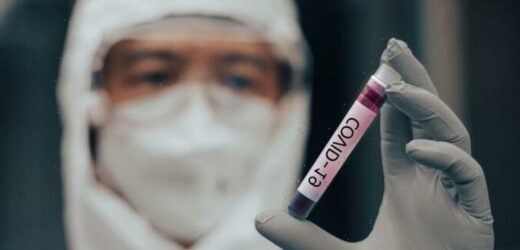Wuhan lab researchers handle bats in 2017 promo footage
We use your sign-up to provide content in ways you’ve consented to and to improve our understanding of you. This may include adverts from us and 3rd parties based on our understanding. You can unsubscribe at any time. More info
The discovery could boost the theory that coronavirus was originally leaked from a lab. The samples were found in soil and came from a Chinese biotechnology firm. They had been sent to the Sangon Biotech in Shanghai to be sequenced back in December 2019. It is thought they had been contaminated with a previously unknown variant of the virus.
Scientists from the University of Veterinary Medicine and Lorand University in Hungary stumbled upon the discovery by chance when analysing genetic soil sample data from Antarctica.
The samples were also found to have DNA from hamsters and monkeys.
Some experts claim this suggests the early version of the virus was grown in a lab using animals or their cells.
Matt Ridley, author of Viral: The Search for the Origin of COVID-19, said: “The unique mutations hint at it being an ancestral variant.
“So if it was sequenced in say mid-December, before anybody had identified the virus in people and started trying to grow it in labs, then it points to secret samples in labs in 2019.”


The Wuhan Institute of Virology, where some suspect the virus was leaked from, is known to use Sangon Biotech for sequencing.
But it may be possible the DNA samples were contaminated by the earliest COVID-19 patients in China.
While experts have not been able to pinpoint the date when sequencing on the samples was done, it is understood that the samples were sent to Sangon biotech in December 2019.
Dr Jesse Bloom, a virologist from the Fred Hutchinson Cancer Research Centre in Seattle, confirmed that the Antarctic samples did contain Covid after re-running the data.
This suggests that there were three key mutations that linked the first strain in humans, Wuhan-Hu-1, to coronaviruses in bats.

But she did stress that “the ultimate implications remain unclear”.
Dr Bloom said: “Those three mutations are intriguing because they are all ancestral mutations that move the sequence ‘closer’ to the bat coronavirus relatives… first reported Wuhan-Hu-1 sequence from the Huanan Seafood Market.
“All we can say is that these samples were contaminated at Sangon Biotech with some early SarsCov2 viruses, some of which appear to have been from lab-grown samples.”
Last month, Express.co.uk spoke to Mr Ridley about the origins of the virus.
He believed that the most likely explanation was that it was passed on from bats, but was leaked from, a lab.
DON’T MISS
‘Food prices to rise further’ in UK as Putin BANS export of chemical [INSIGHT]
Rishi turns back on PM and calls for six oil and gas fields to be fire [REVEAL]
Brexit Britain set to build AND launch Galileo alternative from UK [REPORT]

Mr Ridley told Express.co.uk: “It is a bat virus, but the question is how it got from bats to humans.
“There are two possibilities. One is that it infected an animal like a pangolin which was then sold in a market that infected people.
“The other possibility is that it infected a scientist who was working it bat caves collecting viruses from bats who brought it back to a lab.
“Or he brought a sample back from a lab where it infected a lab worker
“It now seems from all the evidence that has come to light that the latter possibility now looks much stronger than the former possibility.”

China has repeatedly rejected any suggestions of a lab leak.
The theory also remains as just one possible explanation for Covid’s origins.
Another theory is that the virus jumped to humans via animals in public.
A World Health Organisation report cites strong evidence showing that most coronaviruses that infect humans come from animals.
Source: Read Full Article


